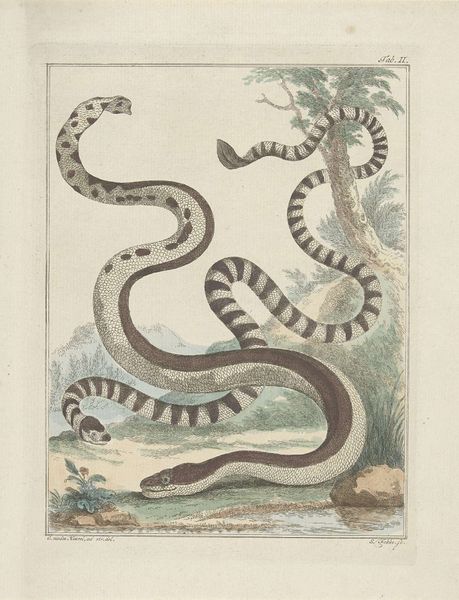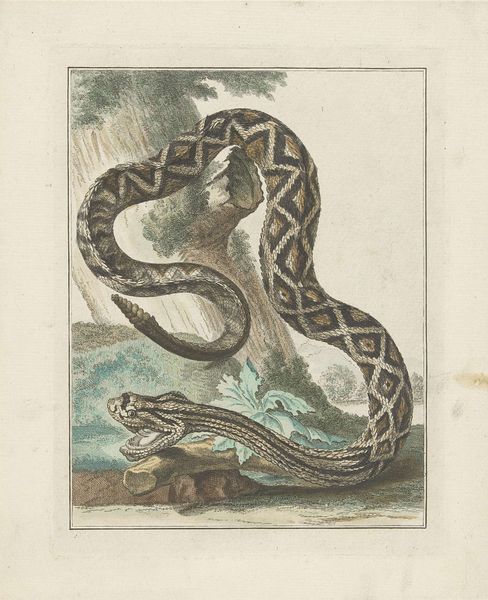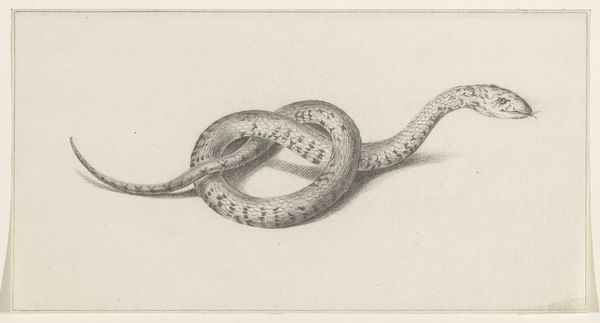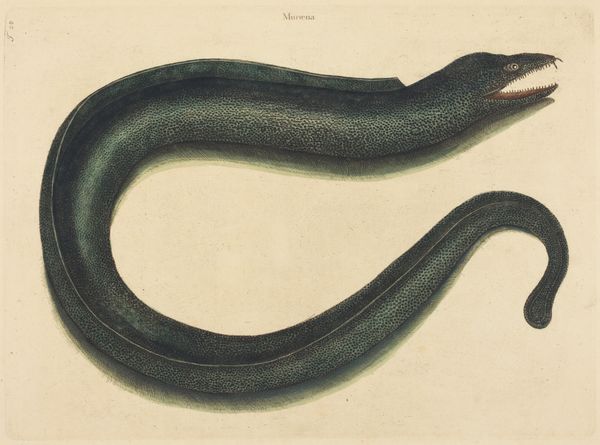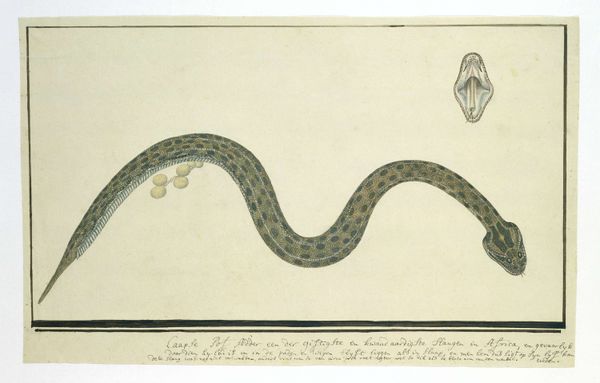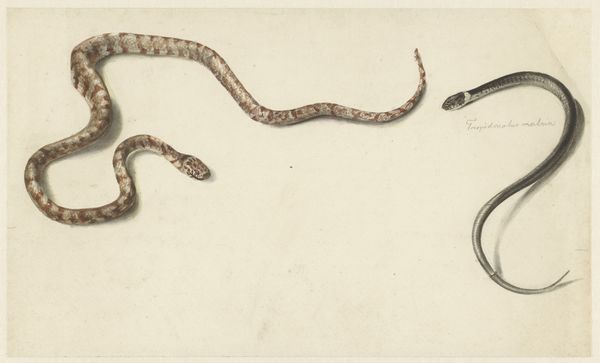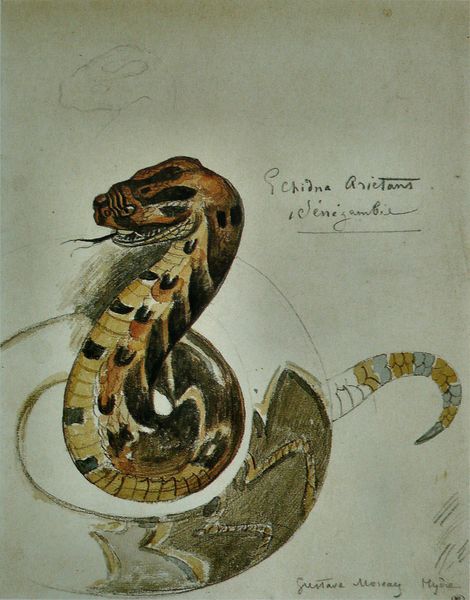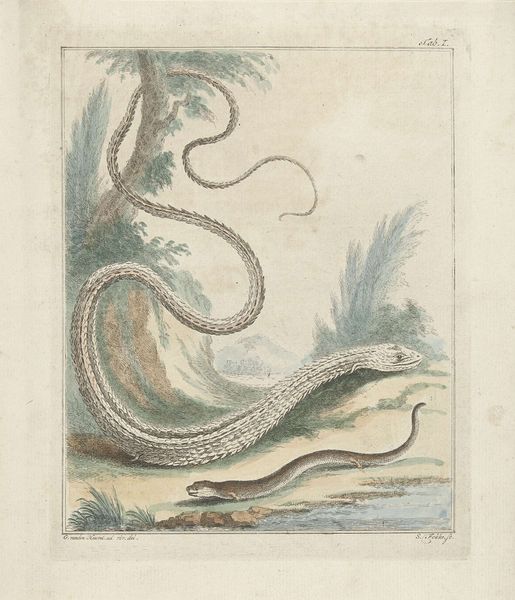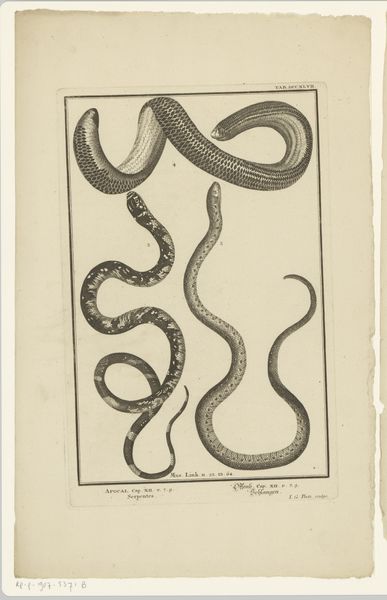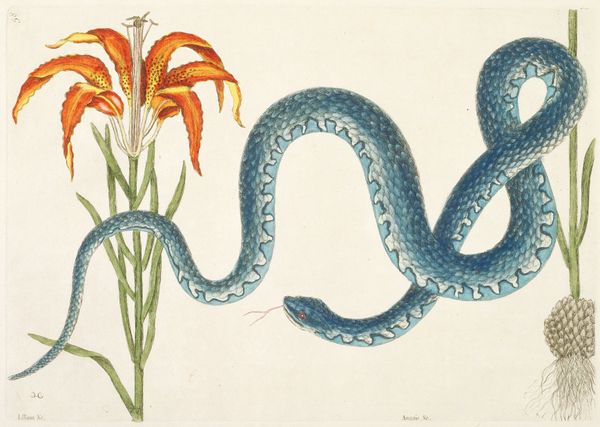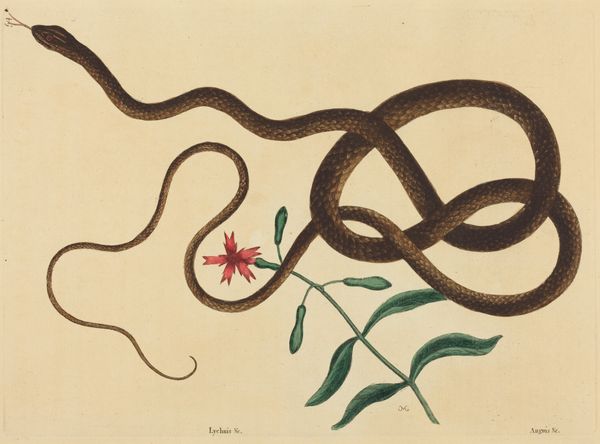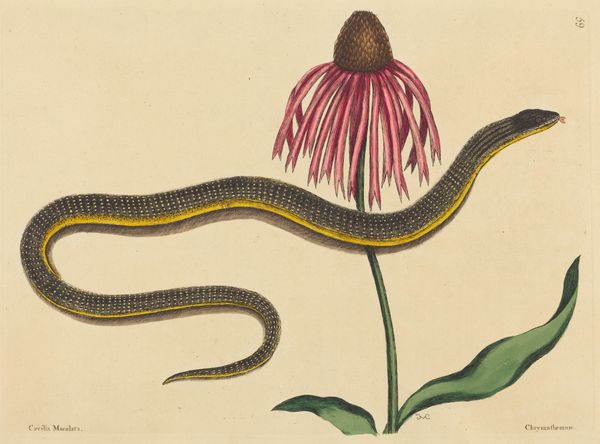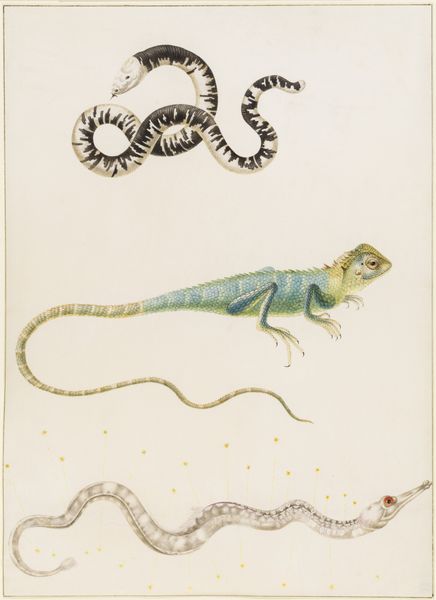
# print
#
figuration
#
line
#
realism
Dimensions: height 400 mm, width 270 mm
Copyright: Rijks Museum: Open Domain
Curator: Well, isn’t that charmingly ominous? All loops and shadow… looks like something out of a particularly menacing children's book. Editor: Indeed. What we have here is an artwork titled "De Slang", or "The Snake," a print that experts estimate was created sometime between 1894 and 1959. It's currently part of the Rijksmuseum's collection. Curator: That estimated date range suggests it was perhaps mass-produced, part of an educational series maybe? The colours are quite muted, like a faded memory. Is this an effort at Realism or more of a symbolic representation? Editor: I would lean toward it being more of a generalized visual reference for natural history perhaps displayed in schools. Think about how printed images served as primary sources of information before photography was widespread. The print provided an accessible way to teach kids about the animal world. Curator: So, a snake poster in a classroom? Makes me think of chalk dust, and hushed, slightly terrified whispers among the children, as the teacher gestures emphatically at it with a ruler. It's unsettling how neatly this 'realistic' image has been laid out – it almost defangs the creature! Editor: Well, there’s always an agenda in imagery, be it conscious or not. Note the care with which the description is placed directly beneath it… there is even a small number "No. 202" marked. This wasn't just about illustrating a snake; it was about ordering and presenting knowledge in a specific way. To make us understand its “proper” place. Curator: "De Slang". Such a loaded image throughout history. Wisdom, deception, fear... it slithers through art, myth and now a print, pinned to the wall for us to scrutinise, another version ready and packaged to provoke a shiver. Editor: Right, it's about shaping the cultural narrative, framing it within specific societal understanding and attitudes. What this simple image tells about how knowledge, natural history, and imagery play political roles within a broader social framework of history. Curator: So it seems a little classroom serpent hides such slippery sociopolitical intentions. Next time I see a poster in school I might never see it the same. Editor: Exactly! Keep the critical eyes peeled. Art lives as a form of subtle power dynamics.
Comments
No comments
Be the first to comment and join the conversation on the ultimate creative platform.
